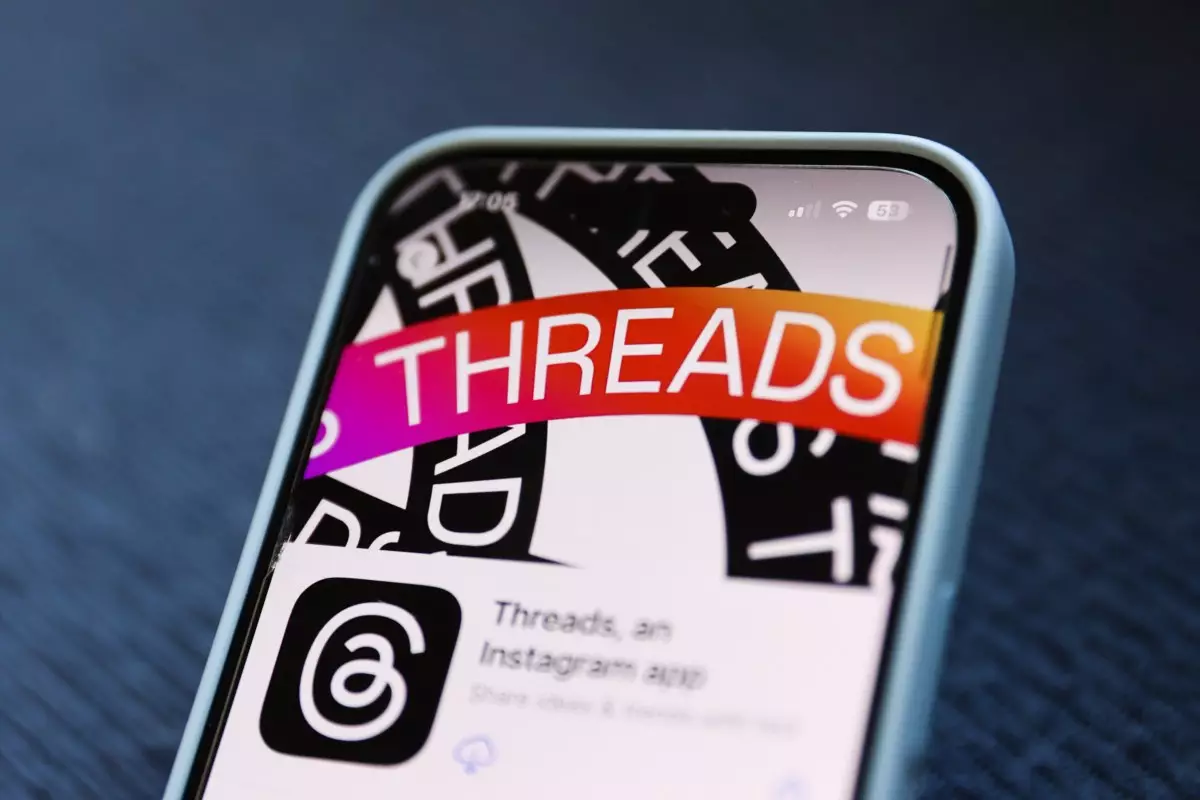In the fast-evolving landscape of social media, Meta’s Threads has emerged as a formidable challenger, closing the gap with entrenched competitors like X (formerly Twitter). With June 2025 data revealing over 115 million daily active users on mobile alone, Threads demonstrates remarkable growth — a staggering 127.8% year-over-year increase. This rapid ascent showcases Meta’s strategic focus on mobile-first development, deliberately placing resources into building an engaging app experience that resonates with users. Rather than resting on its laurels, Meta appears committed to redefining social interaction from the ground up, emphasizing a streamlined, user-centric approach.
What makes Threads a potential disruptor isn’t merely its raw numbers but the larger implications for advertising and monetization. With Facebook and Instagram’s advertising power backing it, Threads has the resources to carve out a significant share of digital ad spend. As its user base continues to expand, especially on iOS and Android devices, it could threaten X’s dominance in the mobile realm — the core arena where social networks battle for attention and revenue. This shift indicates a broader industry trend: the increasing importance of mobile engagement over traditional web-based access.
Understanding the Competitive Battle: Threads vs. X and the Landscape of Alternatives
While Threads accelerates on mobile, the web remains a different battleground. X still leads dramatically in sheer web traffic, with approximately 146 million daily visits globally, dwarfing Threads’ meager 6.9 million. This disparity highlights the strategic divergence: Meta prioritized mobile, perhaps recognizing that today’s users are less inclined to browse on desktops, while X has maintained a web-centric dominance. The web figures underscore X’s entrenched presence but also expose vulnerabilities — especially if more users find value in the mobile experience offered by Threads.
Yet, the contest is nuanced. Within the U.S., Threads enjoys higher web visits than Bluesky, a decentralized platform focusing on openness and user control. Bluesky’s surge following political protests against Musk’s X underscored its potential, but its overall user engagement remains modest. Its challenge lies in converting casual curiosity into consistent app usage, especially since many visitors simply peruse content without actively participating. Bluesky’s strength, however, lies not just in user numbers but in its technological framework that champions decentralization, hinting at a future where social networks are less beholden to corporate oversight.
In contrast, Twitter/X’s decline in user growth—declaring a 15.2% decrease in growth—suggests that traditional social giants might be losing their former grip. Nonetheless, X still benefits from a loyal user base and a powerful web footprint, making it a resilient opponent, especially with Musk’s regular updates and the platform’s entrenched role in news and public discourse.
Long-Term Visions: What Each Platform Promises and Challenges
BlueSky represents a different ideological approach; its openness aims to foster a more transparent and user-driven social ecosystem. Yet, its challenge is retention. Why would users stay long-term? If Bluesky can continue innovating technologically and maintain an open platform, it might turn into a hub for those seeking alternatives to corporate-controlled social networks. However, initial surges driven by political protests or ideological shifts may not translate into sustained growth unless it evolves into a compelling, feature-rich environment.
Meta’s strategy with Threads is evidently designed for rapid user acquisition and monetization. Its 350 million monthly active users, as per Meta’s reports, reinforce the company’s belief in mobile’s central role in future social interaction. Still, the platform faces hurdles: it must convert its explosive growth into sustainable engagement, diversify monetization beyond just ads, and maintain user trust amid ongoing privacy debates.
In this noisy battleground of digital social spaces, it’s clear that no single platform can monopolize attention indefinitely. Threads’ ascendancy isn’t just a passing trend; it signifies a shift toward mobile-first, more integrated social experiences. Meanwhile, traditional players like X must innovate or risk becoming relics of a different era. The landscape is undeniably competitive, but it also promises a period of innovation that could redefine what social connectivity truly means.

